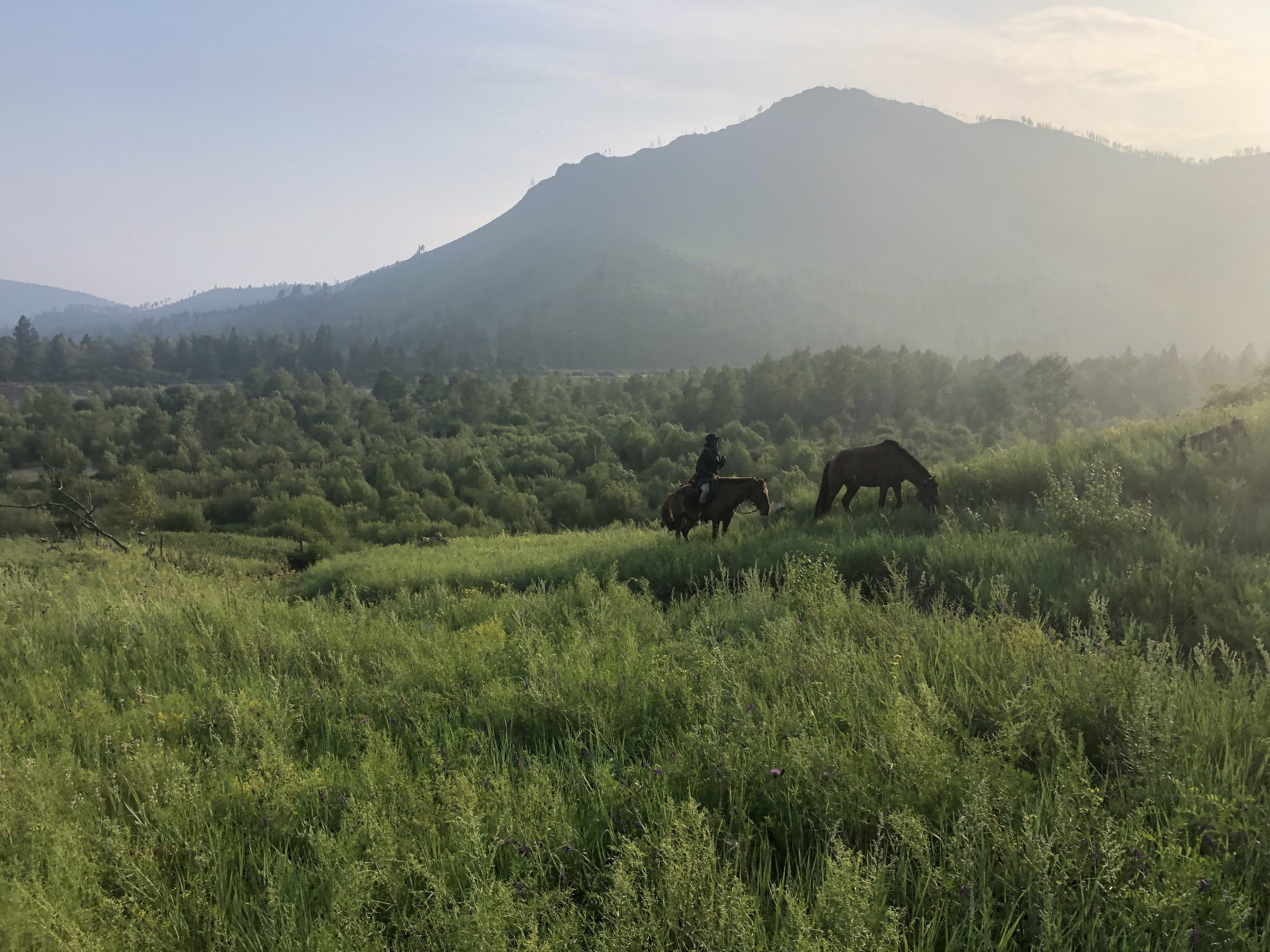
„A horse without a rider is still a horse, but a rider without a horse is just a human.”, as a Mongolian saying goes. [1] There are plenty of sayings from Mongolia that are built around horses – which shows how deeply rooted horse riding is in the Mongolian culture. The Mongols are descendants of Genghis Khan – a people of nomads, shepherds and riders. Over the past century, the country freed itself from China, and under the shadow of Soviet Russia, became the second largest Soviet country of the world, winning its independence as democratic state – including the accompanying effects of capitalism and division of society into rich and poor.
Today, around a third of the population lives below the poverty line. They populate the large area of steppe and deserts in comparatively small numbers – Mongolia counts as one of the largest countries worldwide. The majority of the population lives in the capital Ulan-Bator. [2] To get a sense for the proportions, a comparison: Germany fits into the surface area of Mongolia 4.4. times with 1.564.116 km². Though, there are less humans living in the whole country than in Berlin (3.2 million Mongols versus 3.7 million Berlin citizens). This means, Mongolia offers untouched, wide landscapes, which we from Central Europe cannot even imagine. The population density is 2 inhabitants per km2 – in Germany it’s 233 inhabitants per km2.
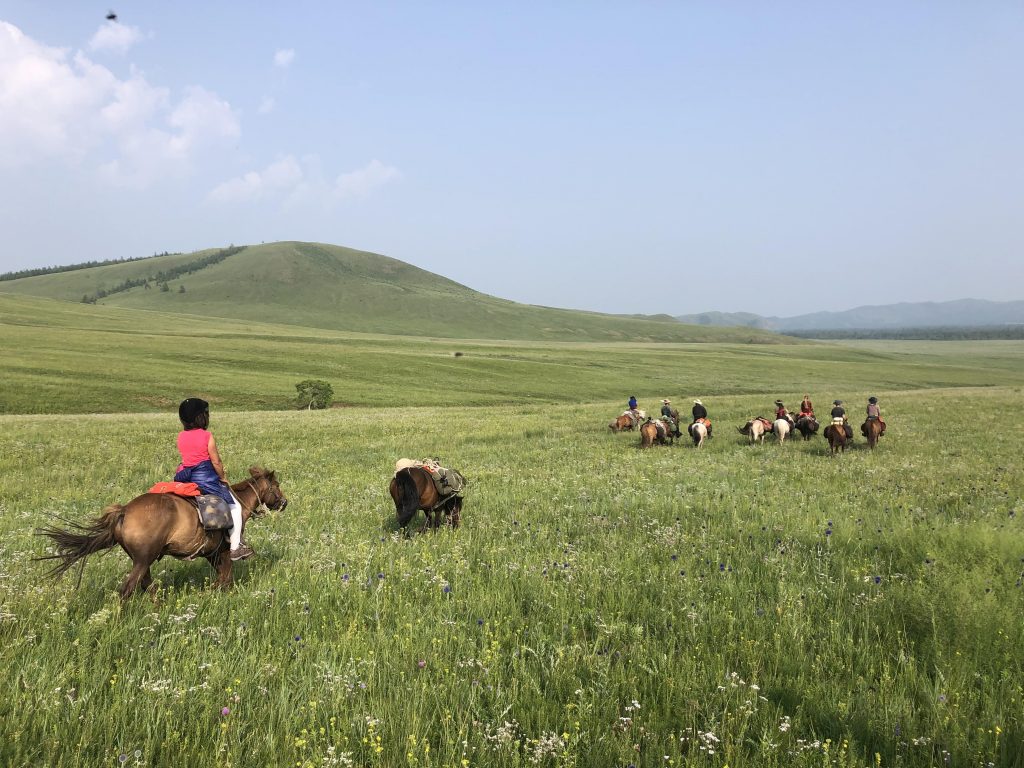
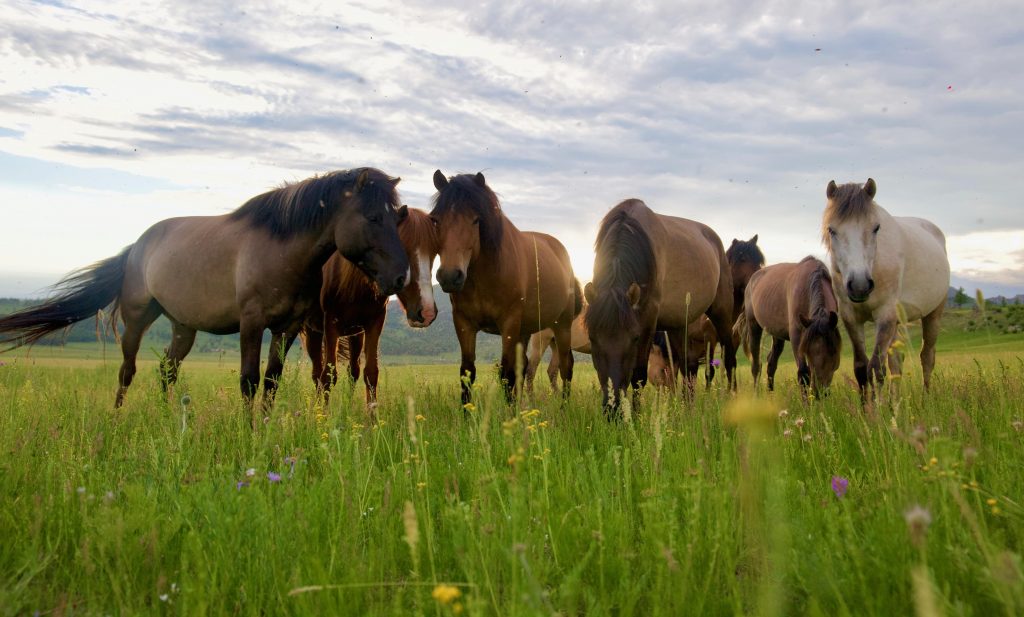
The landscape alone makes traveling to Mongolia worth it. The most authentic travel is to explore the country on horseback like the inhabitants themselves have for centuries. And this is precisely what a friend of mine from Kassel did for the incredible duration of two months: from 01 July to 29 August 2019, Hannah traveled with a ten-person organized travel group and 16 horses into the vastness of Mongolia. For a good reason, she might have thought: “Even the fastest horse just has four legs.“ [3] One needs time for the large country.
The participants of the horse-riding travel came from different European countries and California. Frank an Stell, the organizers of the travel, had taken care of everything. Furthermore, a Mongolian guide named Ogi, who knew the region and horses well, joined the group. The daily covered distance differed strongly. Beside the break days, the group managed to ride 15 to 70 km per day. Hannah took time to talk about her travel.
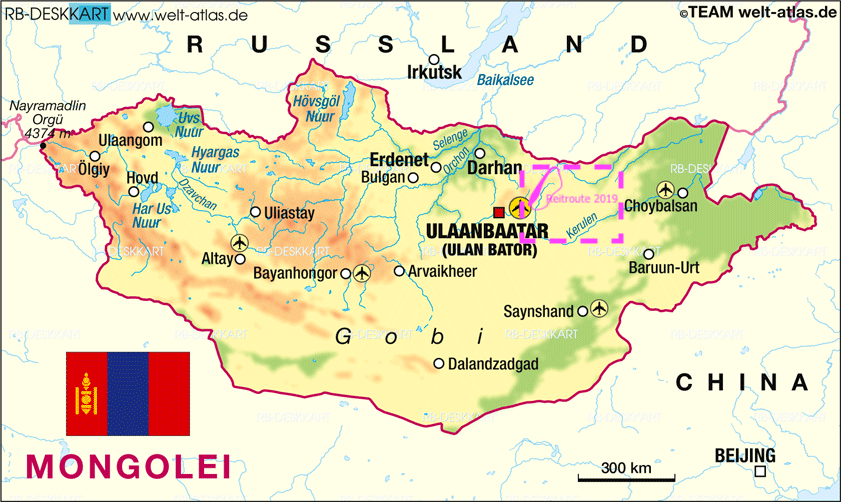
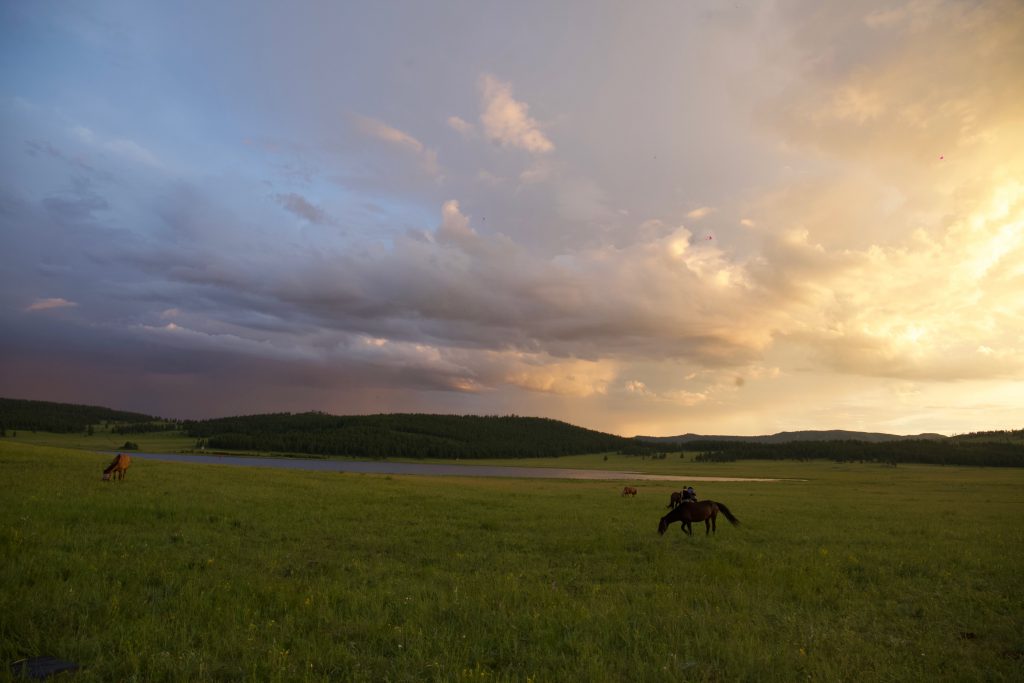
How did you get the idea to travel on horseback?
2014, I traveled by train from Germany to Portugal, the way back I went over Spain, France and Italy. I felt so disconnected from the beautiful landscape that I had the idea to travel one day with a horse. Here in Europe, I did not like the many highways and necessary official approvals to travel on horseback somewhere. So, the idea had been pushed into the background – until I heard of the “horse caravan” of Frank and Stell. Then it became obvious pretty fast that this was a great opportunity to travel on horseback. At the beginning, I felt it all was a bit much, being on the road with foreign horses in another culture, which I did not know. But I liked the idea of being a part of a group, being with people that had been horseback riding often and longer in different countries.
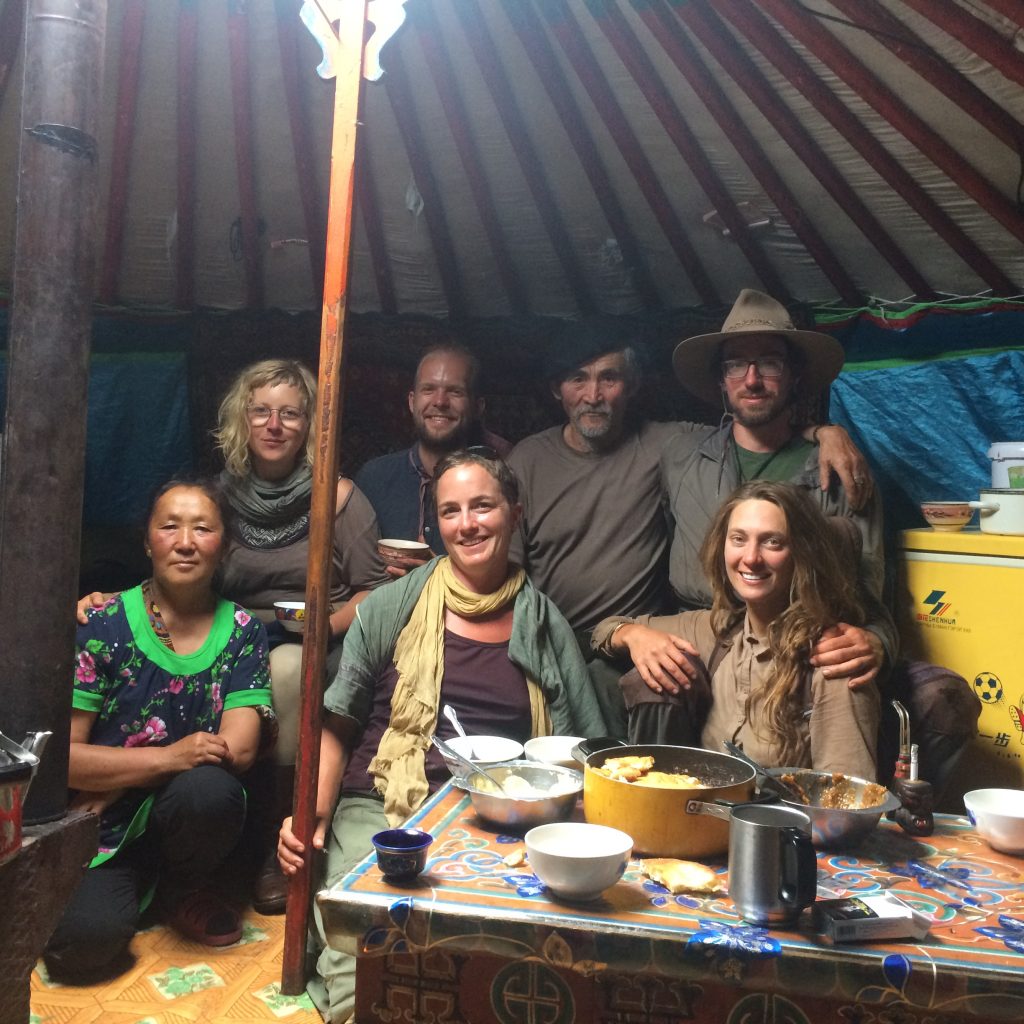
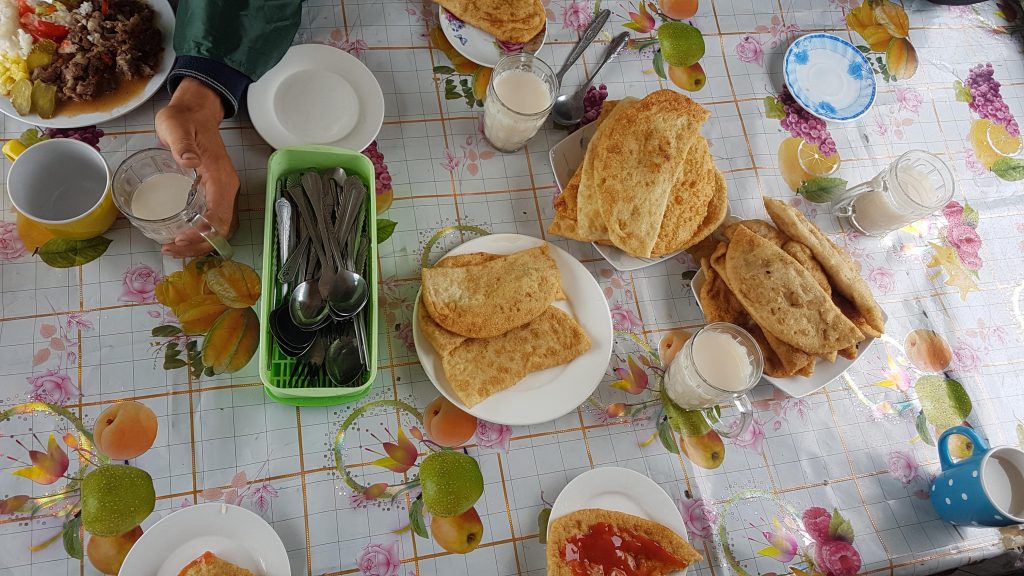
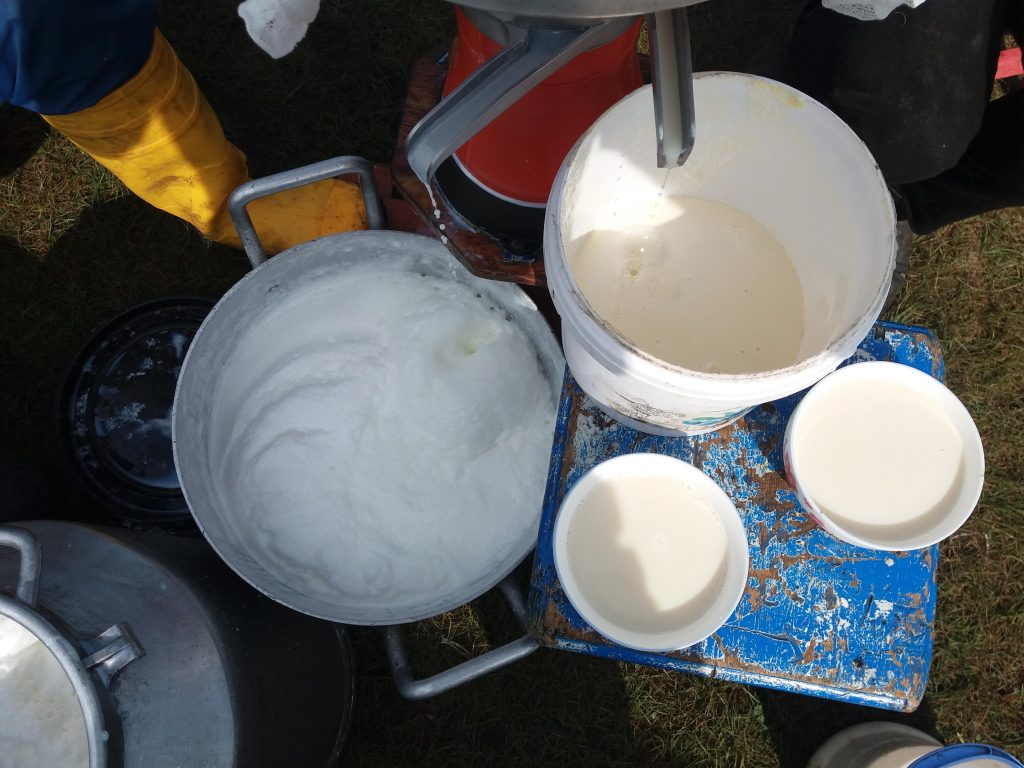
How did you prepare for Mongolia, what did you e.g. research?
First of all, we needed a visa for Mongolia. The other important thing was riders and outdoor equipment. In Summer, Mongolia can get very cold at night and at the daytime without clouds it can get very sunny. There is also no shade because mostly there are no trees. Additionally, there is heavy rain. That’s why you need clothes for very different weather conditions. We also brought water filters for the water from rivers. But from many rivers we just drank the water directly without using filters. I was really impressed by that. Here, no-one would do that anymore!
What impressed me the most, when I researched the culture was that from the era of shamanism the ground, the soil, was sacred. It was so sacred that it was forbidden to harm it. This is why no houses were built that could open up the surface, instead, they lived in nomadic tents. Also, they would have needed to open the ground to cultivate plants. So, until today, free-range animal herds are very common in Mongolia. Sometimes grain is cultivated because grain can be sprinkled onto the soil and it spreads roots without one has to harm the earth’s surface. Therefore, the Mongolian nutrition is up to this day, especially in rural regions, characterized by meat, milk products and grain. For me as a vegetarian these weren’t the best conditions. But we solved this problem quite well along the trip. They got a lot of imported vegetables, especially from Russia.
Which electronic devices did you take on your travel?
I brought my mobile phone to track the GPS location and to take pictures – additionally, a headlamp, a power bank and a solar charger, these did not work for the most of the group. Anyway, we traveled mostly with area maps made of paper and assured our location by using the GPS tracking. But reception was not always available.
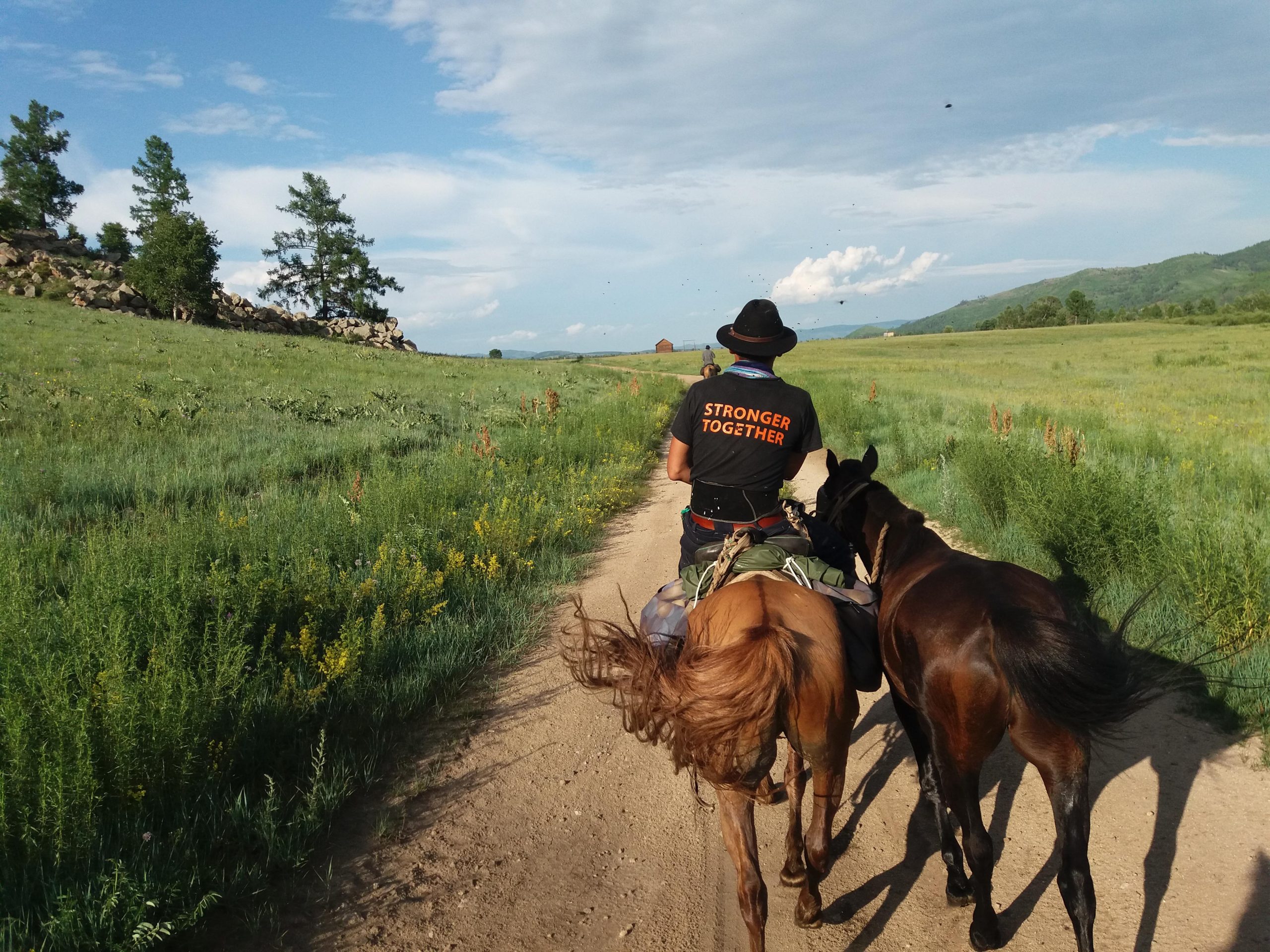
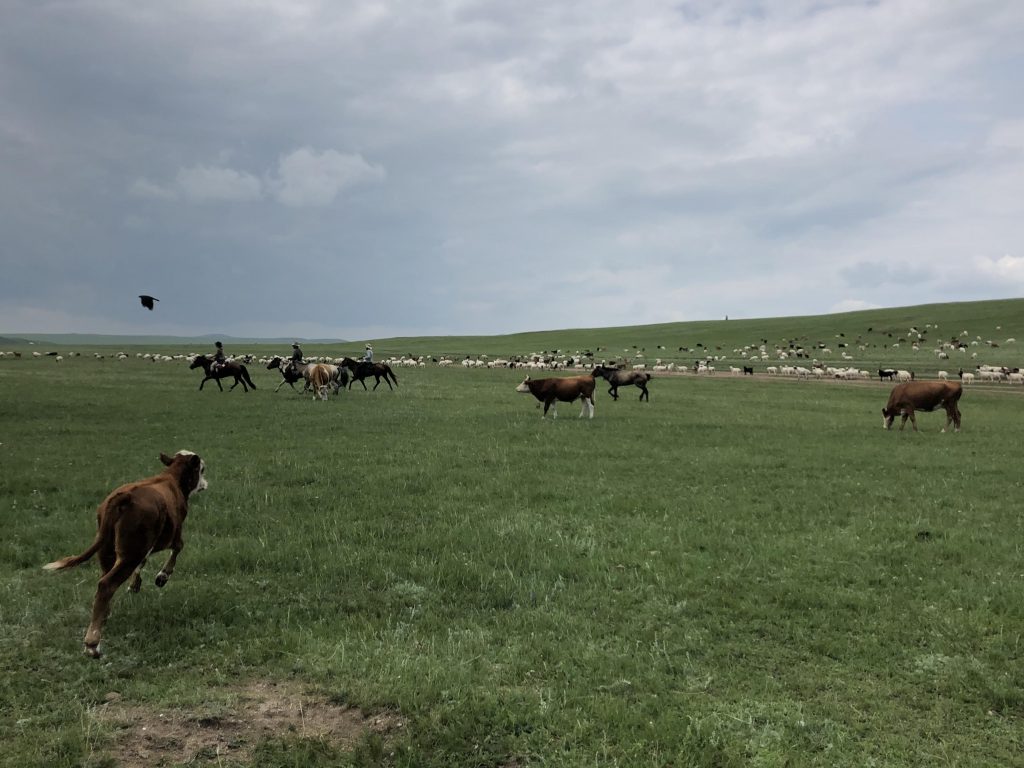
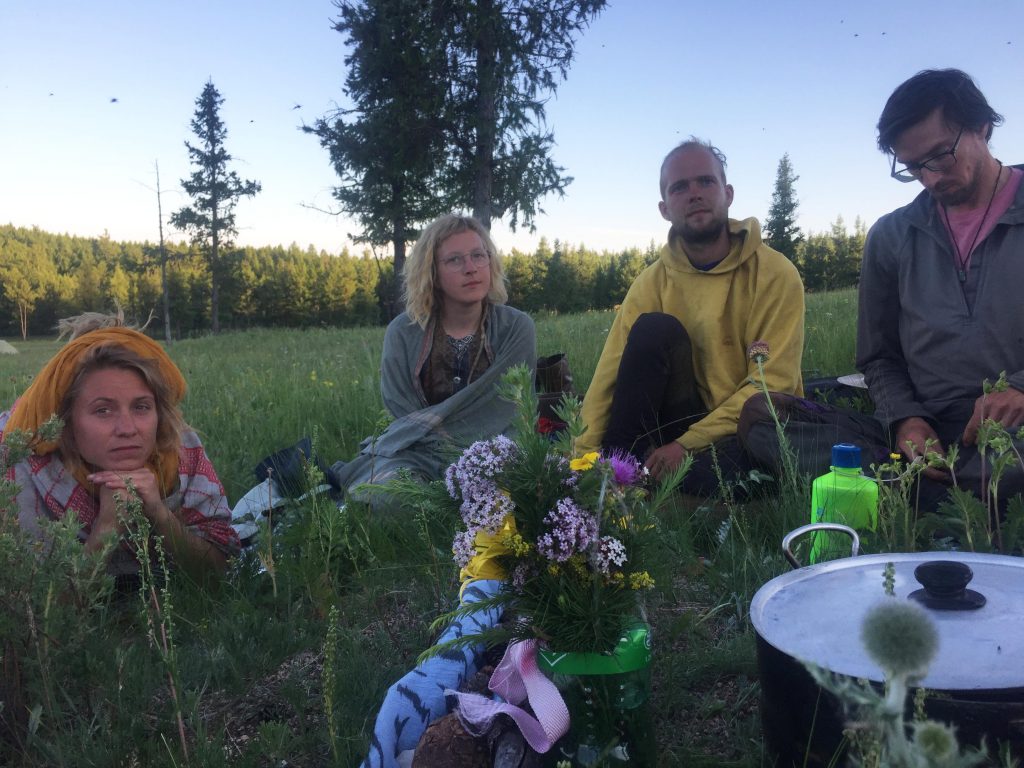
Is riding a horse possible without prior knowledge?
I used to take riding lessons, that’s why I had confidence in my skills being saved in my body somehow. But two weeks before the travel, I visited a friend in Leipzig who also is a riding instructor and who gave me a short crash course. In Mongolia there are plenty of organized horse riding travels from travel organizations, but a lot of them expect prior knowledge. Frank and Stell offer a very easy access in terms of horseback riding (but not in terms of outdoor robustness). We also had riding newbies in our group – and that worked out fine.
Where did you sleep along the way?
We brought along single and group tents. Therefore, we were pretty independent from hosts and the infrastructure during the travel. In many places we could have slept in the Mongolians’ homes because the small yurt accumulations are spread over the whole country. But when we were very remote the tents became quite important. I also believe that to be guest in another culture while at the same time, to experience the daily travel load and physical and mental activity would have been too much at once for me personally. To be able to retreat into ones own tent was an important part of regeneration and recovery.
Did you take longer breaks during the travel?
Mostly, we rode three, four days at once to then take two, three days for a break – to integrate, relax, enjoy lakes, visit a Tibetan monastery, for workshops and to be.
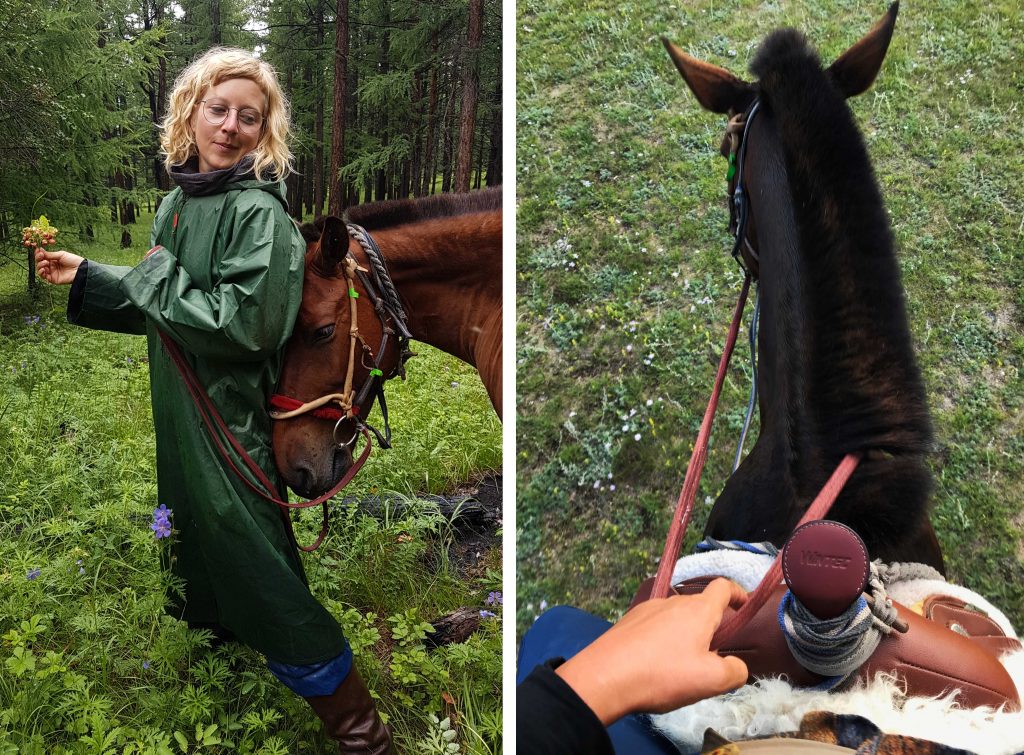
How did you experience slowing down through the horse riding?
In comparison to my train travel 2014, I felt slowing down pretty strongly. But in total we worked pretty hard physically. Building down the camp, packing, riding, taking care of the horses, building up the camp, cooking, being on night watch etc. There was a lot to do every day.
During riding, I noticed mainly big variety of the different paces, the gaits and the own “co-operation”. For me it was especially significant to experience the strength within the animals. Nowadays, I almost feel it is ridiculous that the power of cars is measured in horse power. The horses achieve their power from their own body, not an engine that would just stop without fuel.
By the way, I rode a very fast horse and I loved the pace. It was very thrilling. This is something I can’t experience in a car on the highway, in a train or an airplane, even if they are much faster. The vivid experience on the horseback directly surrounded by nature – this is just pretty special. Additionally, the landscape of Mongolia is so wide that at the beginning, I had to learn to experience nature for myself there. First, the whole thing looked surreal and like a coulisse. I think it took two weeks until I could properly realize my surroundings.
And yet, there was a slowing down and I could choose the pace of movement or at the end of the day, our diminished strengths let to slowing down. There were plenty of moments of wondering and pausing in the movement with the country and the animals.
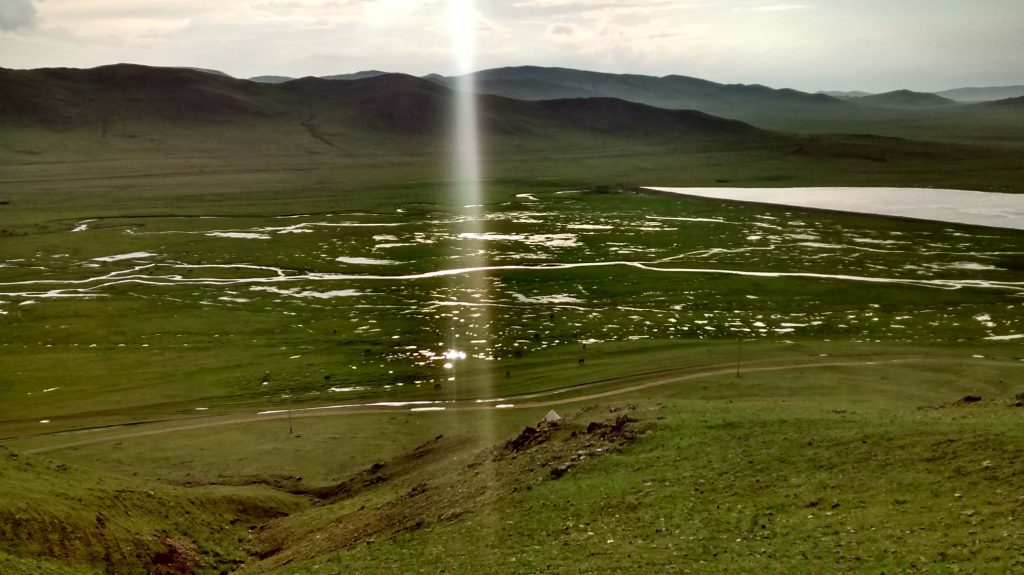
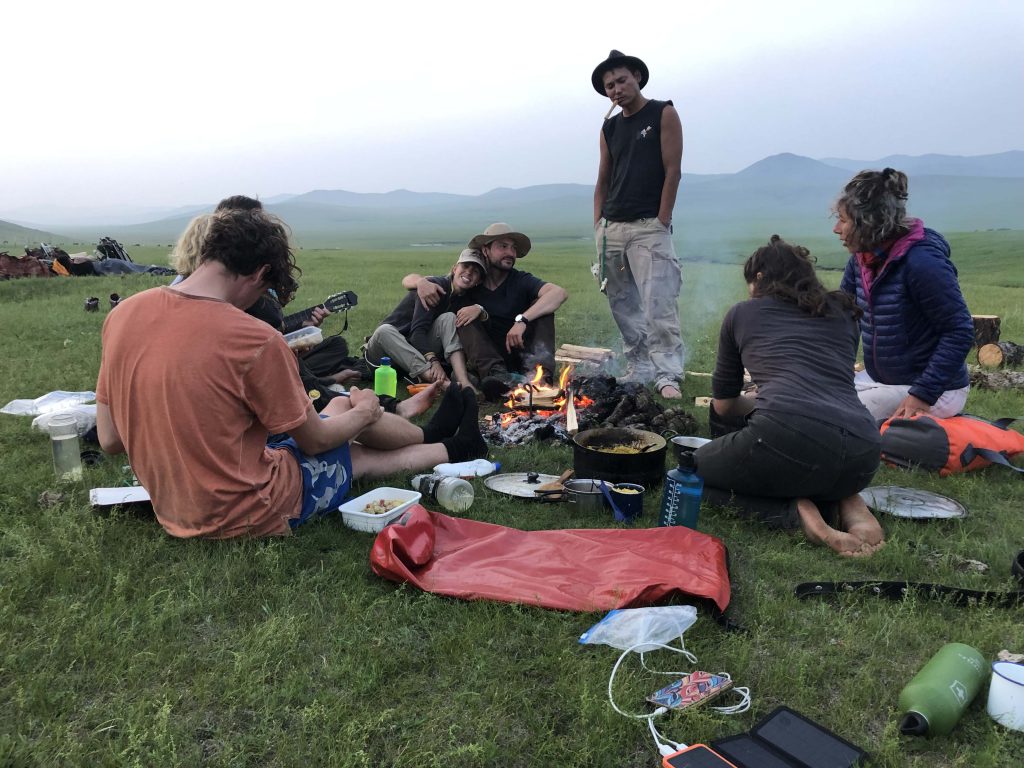
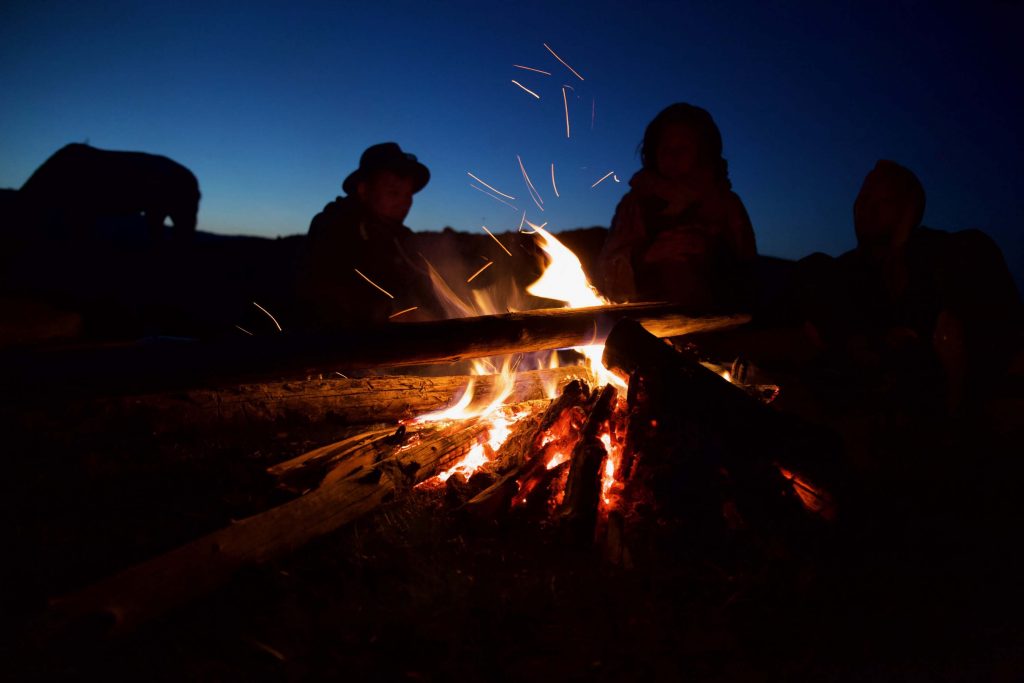
How did you experience nature along the way?
Never in my life have I experienced such an incredible width. First the steppe, then in particular conifer forests, which were partly burnt down. We were there during midsummer. Specially, close to the Russian border there were so many flowers, which I could have never imagined before. Like said before, we drank directly from the rivers. At first, this was a bit strange but in total, created a very connected feeling with nature. And, yes, simply through our „outdoor being“ we were pretty exposed to the weather conditions, sometimes affected by rain for multiple days straight. Our clothes were wet or damp, so was the wood, the fire was just smoky. This really was a change to our daily life in Germany. There we mostly can quickly take shelter somewhere or take something dry out of the closet.
The moment when we were past electricity lines for the first-time was very special to me – there was really no human impact anywhere anymore. This really touched me. At night, the sky was very dark and full of stars. And then sometimes a motorbike came along and drove into the romantic scenery.
What I found also very impressing as a nature experience was the riding or walking through animal herds. When we were sitting on top of the horses, cows, sheep, goats or yak herds broke up and ran off. On foot this wasn’t so obvious and I felt more vulnerable against the spiky horns. Then, I mostly climbed back on the horse even when my knees were already in pain.
I could go on with this list about nature experiences. It is just an experience to be in such a less humanly affected or altered place – but also not harmless, it’s dangerous. In the region there are, for example, bears and wolfs – but we did not meet any, which was good because our bear spray leaked out half way through the route.
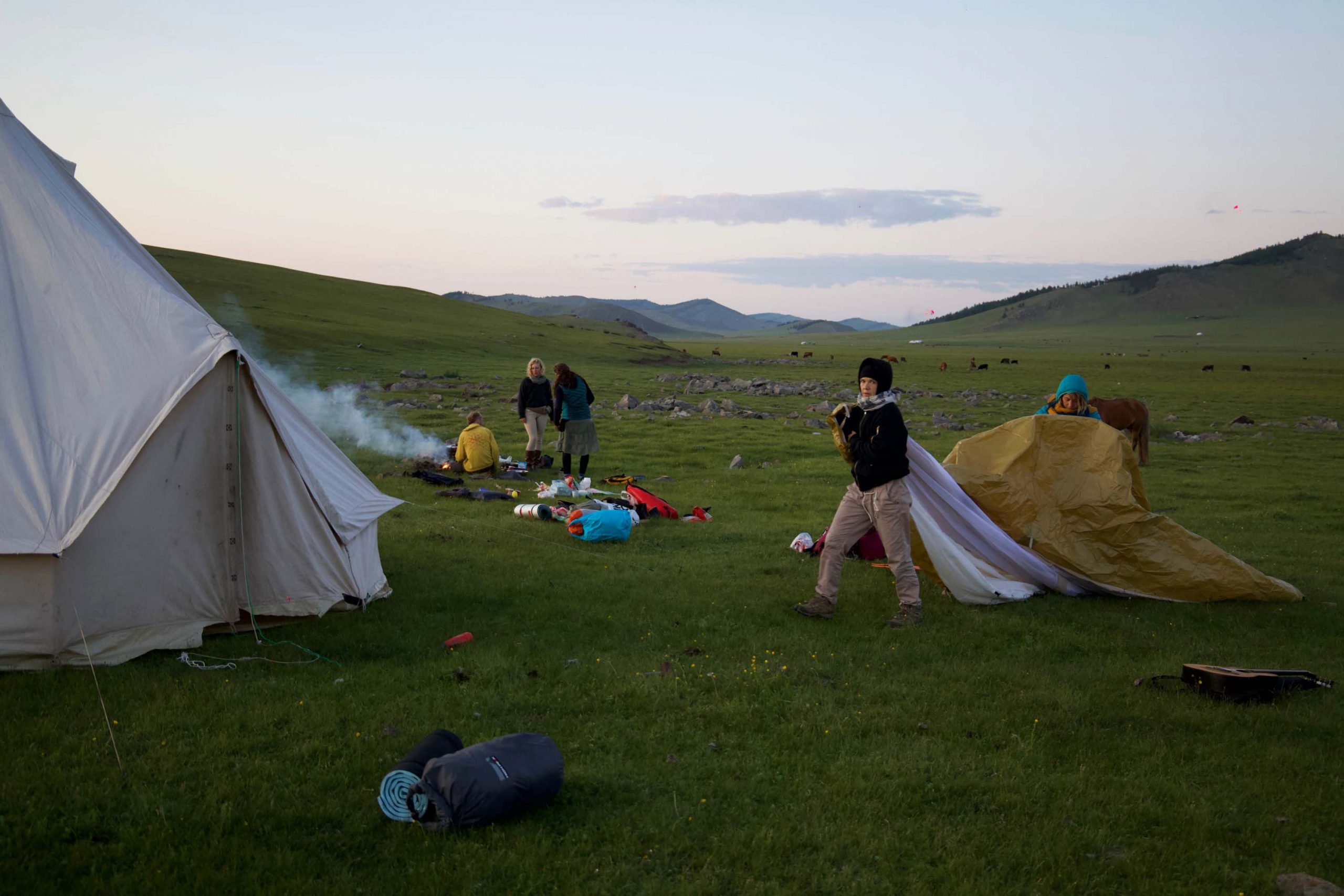
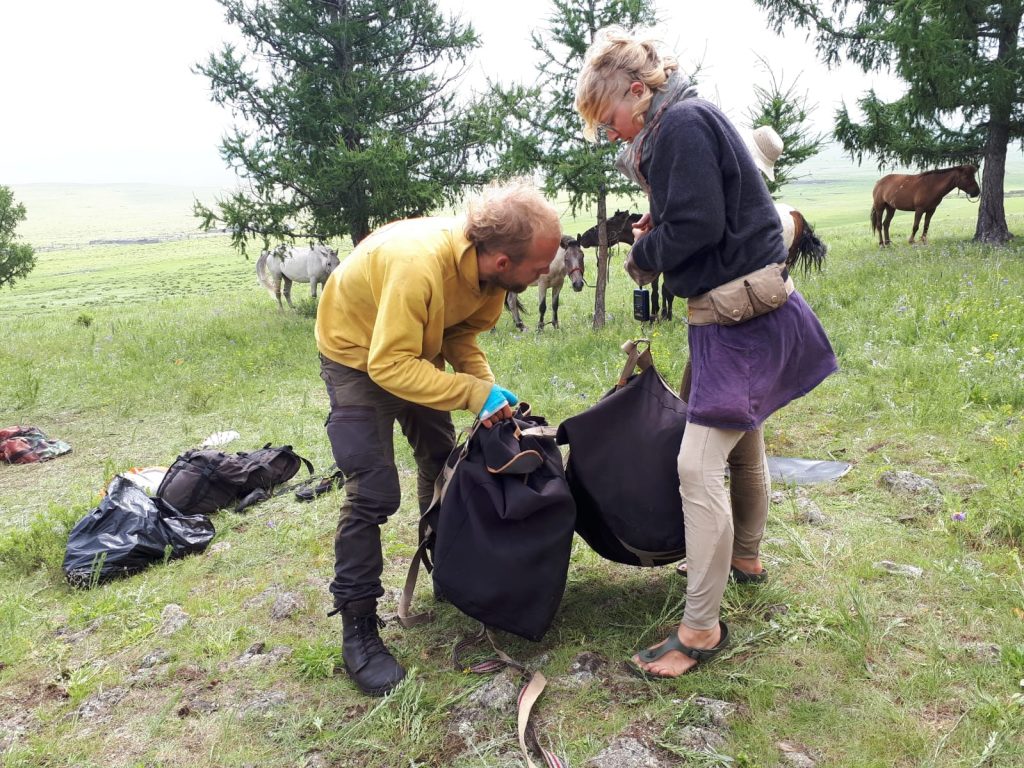
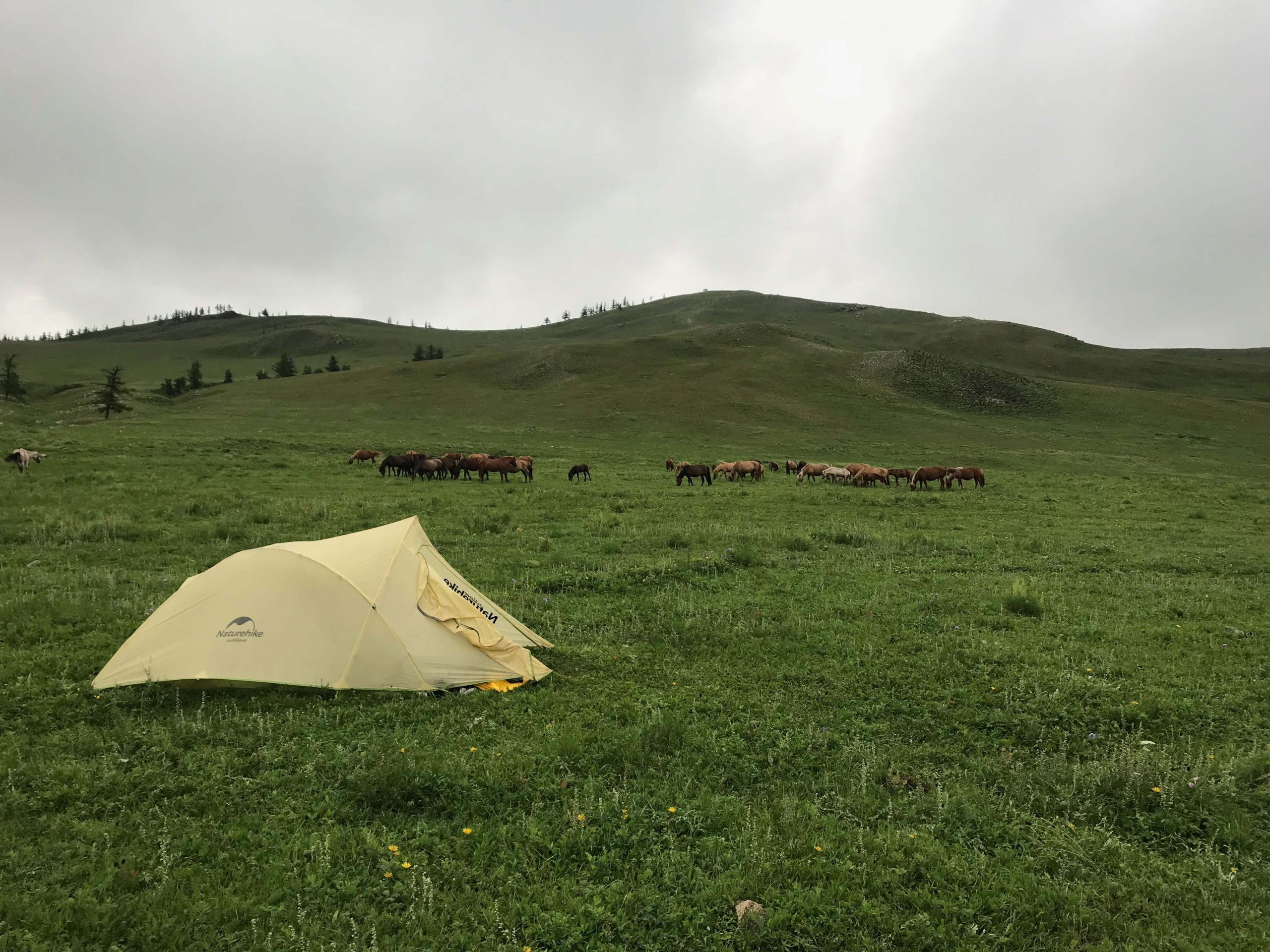
What did you notice about the Mongolian culture?
I was very impressed by how simple and connected with nature the people, the nomads of the region we traveled, lived. On the other hand, many of them already had a flat screen TV, a satellite antenna, a motorbike and a smart phone. These objects stood in contrast with the smoking metal fire place and the felt walls of the yurts. The Mongolian culture is very welcoming. But without our guide who could also speak English it would have been difficult to communicate. Often, we received white bread, yogurt, milk or dried milk specialties as presents in yurts (which we had trouble getting used to with our taste buds). There are also very strict rules that should be obeyed by visitors: It is not good to step on a yurt’s doorstep. As foreign guest one should also always enter left in the yurt.
Sometimes locals helped us when our horses run off, which happed from time to time. This was certainly pretty helpful. Throughout the contact with locals we also got to know the Mongolian singing and they showed us how a goat is slaughtered. But I personally skipped this event. Some of the group members described it as very important occasion, also to reflect on their own meat consumption and to set it into a new perspective. For me, already drinking mare’s milk was a big challenge.
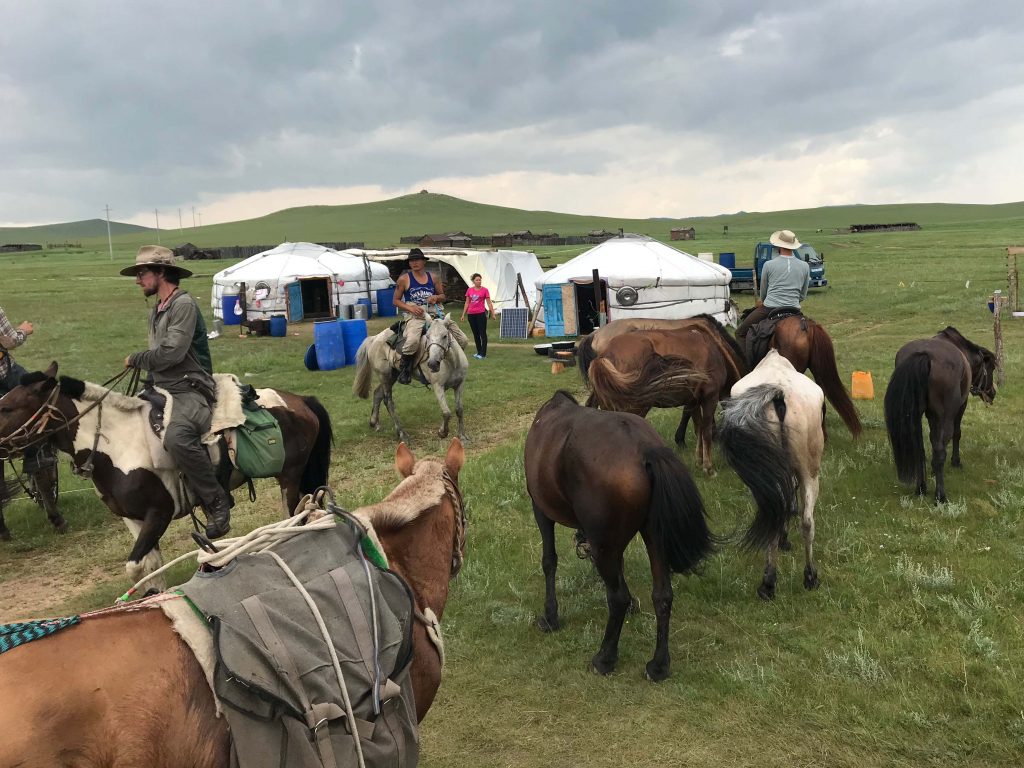
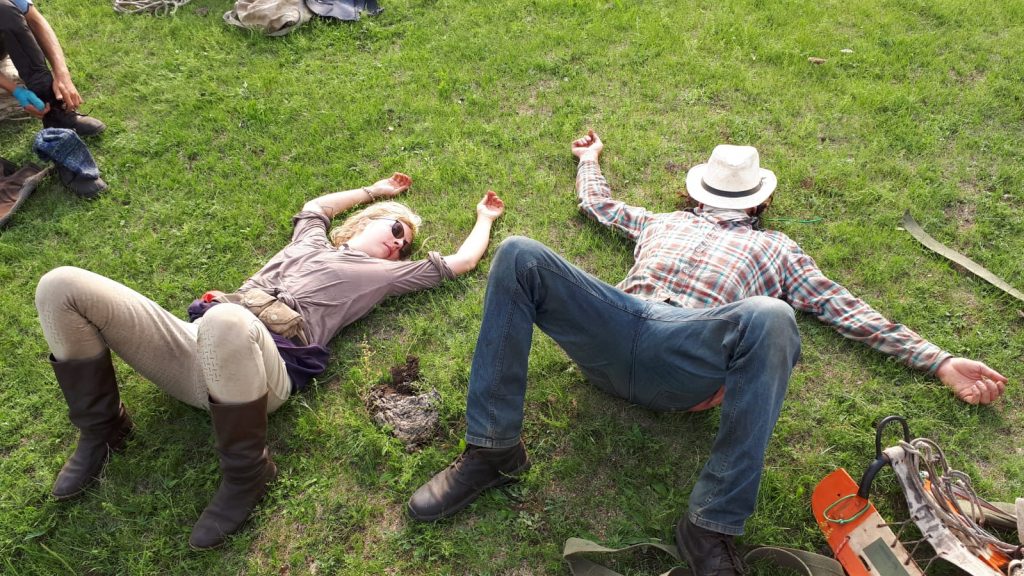
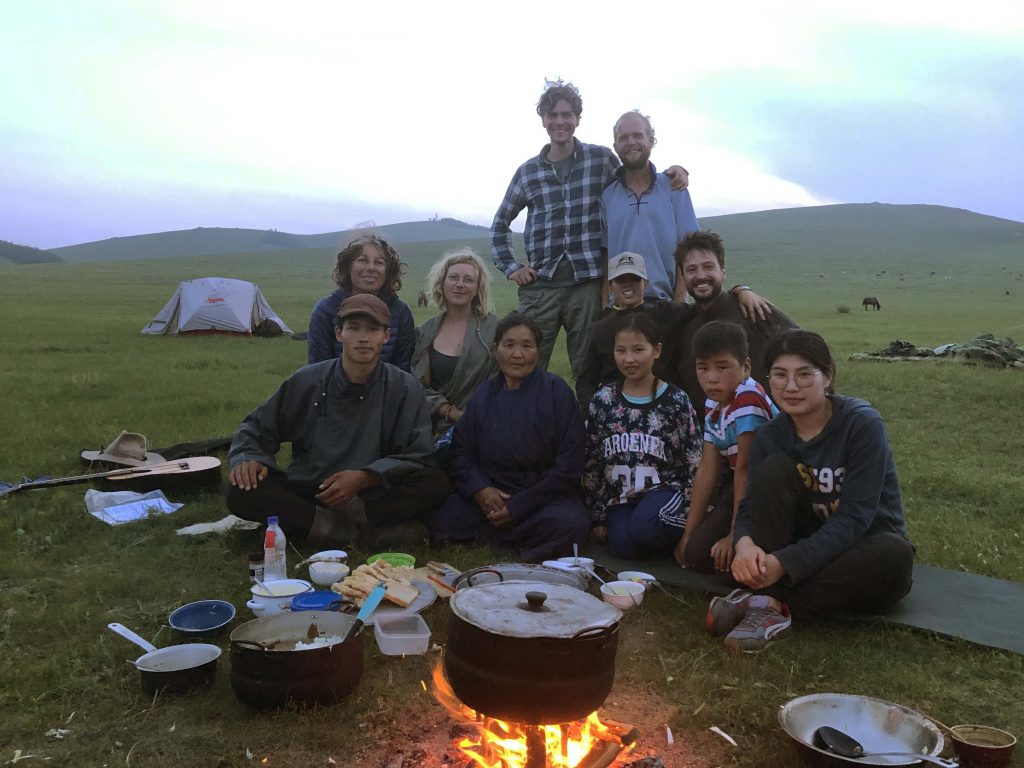
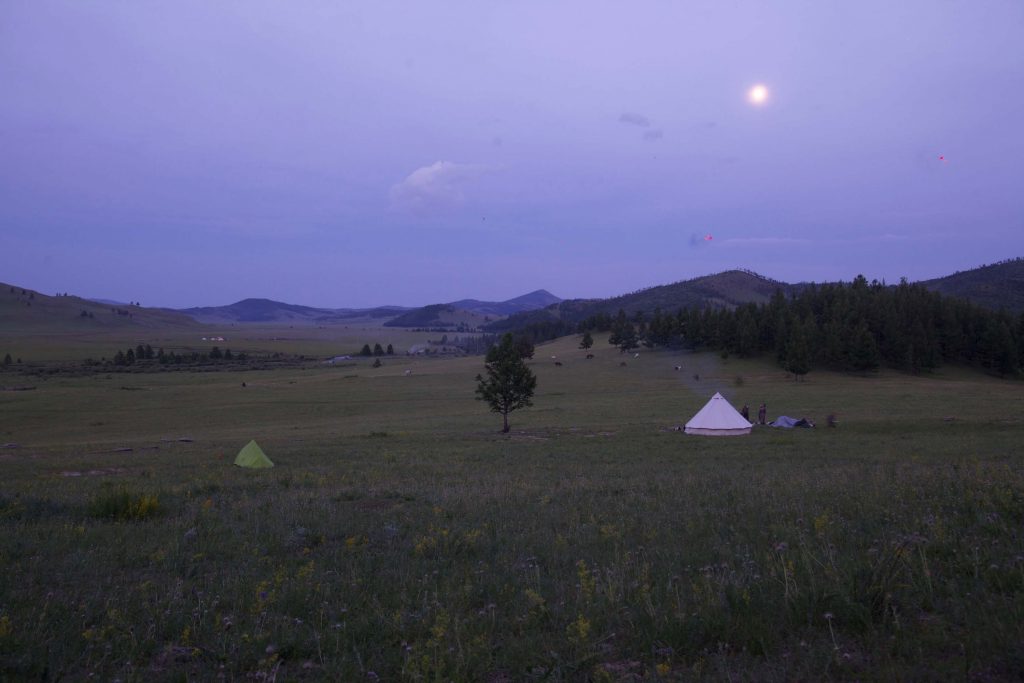
Did you make new friends during the travel?
I am still in contact with the travelers that I knew before. I am in contact with the others from time to time via internet. I often think back to my horse. Especially, during the first lock down the memory of the travel reminded me of the feelings of freedom, which in daily life are quite lost.
Did you have to make conscious, sustainable decisions during your travel?
To me it was important that our Mongolian guide was paid well. Additionally, it was possible to rent horses from friends, because Frank had already known Ogis family for a few years. Without this connection I would have found it weird to buy horses and then later, re-sell them again. In total, the handling of the horses was not all easy. At the beginning, I almost could not bare to see that three of their four legs were tied with ropes at night, so they would not run off. It was also quite impressive to experience the freedom of the animal herds and then later at home, feel sorry for the animals in their small meadows and boxes.
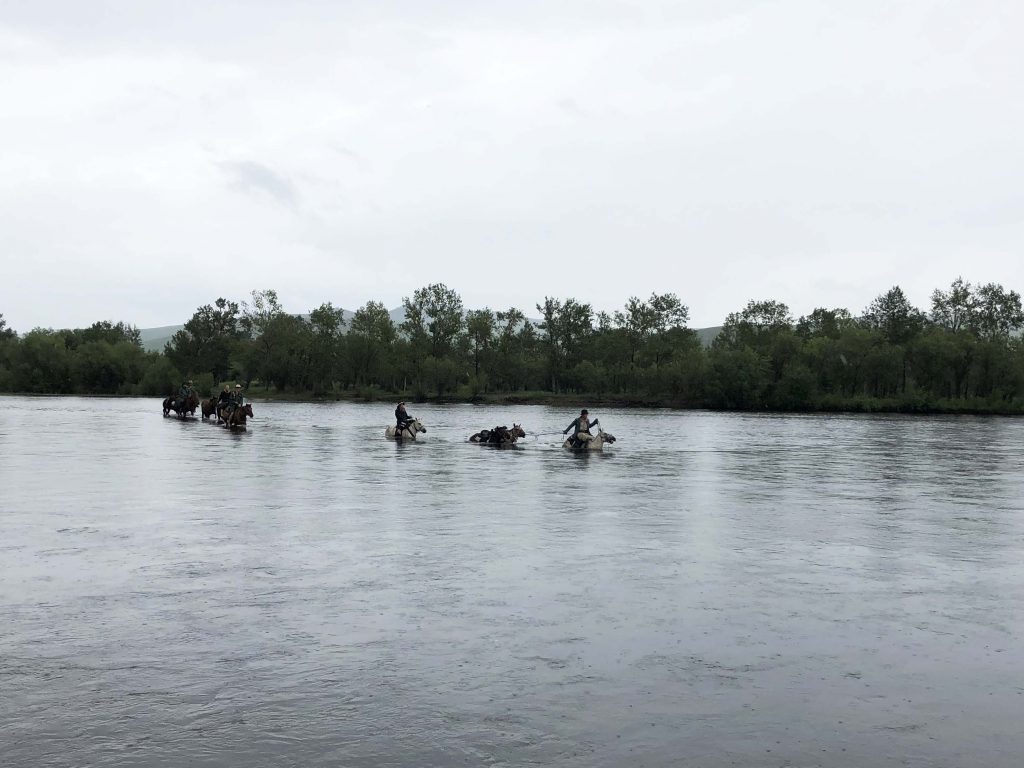
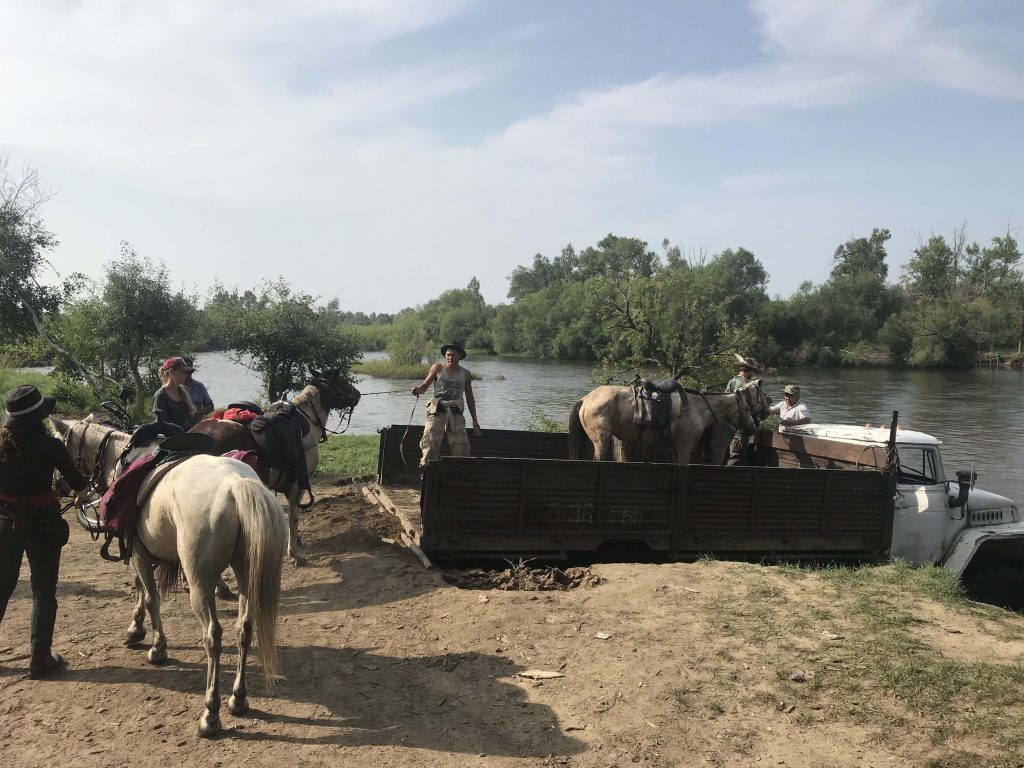
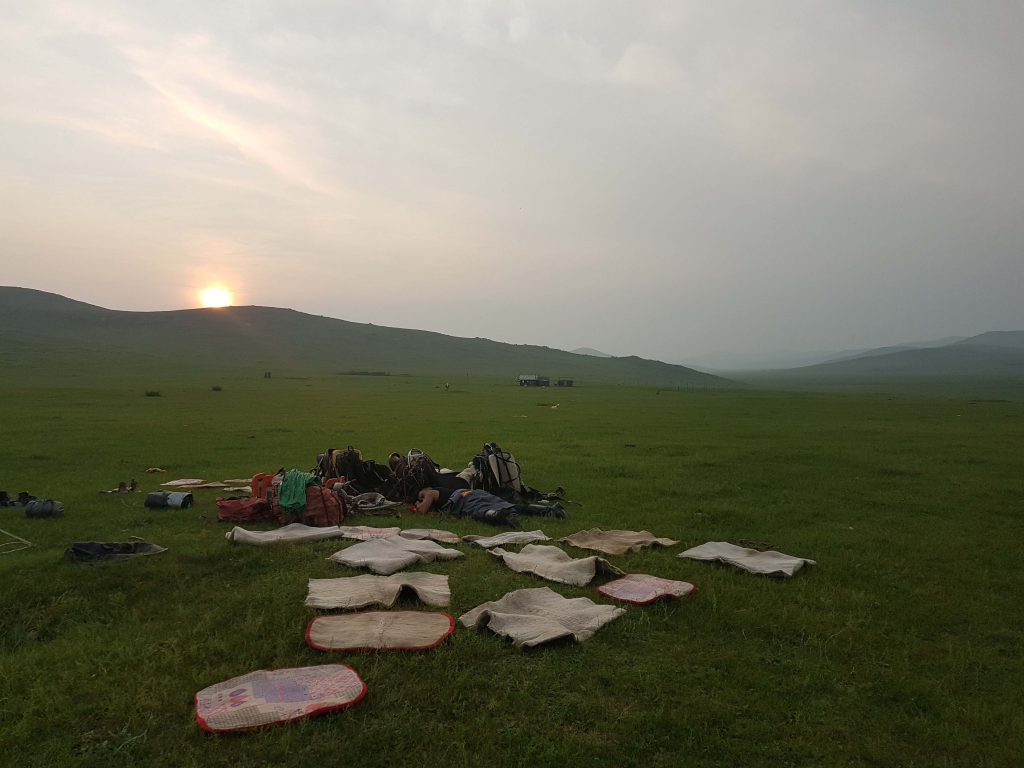
What was the best about your travel?
Gallop with Badgan, my horse that I rode – this was the very best! Additionally: the direct nature experience, the width, the rocks, the water, to witness my own strengths and as well my own vulnerability. Group power and challenges! The adventure!
Where there any dangerous moments during the trip?
To be outside of „civilization“ of course always has some side effects, like e.g. medical care is not quickly available. This is always a part of the travel but also a part of the adventure. We also had some injuries, which luckily were not so bad that we had to stop the travel. One time, three rivers in a row were dried out, very dirty and at the same time, we were pretty tired from the day. At the end, we found a river finally. And then there was the exact opposite: a stringing together of rainy days, which was very challenging. It really got to our nerves and also caused some conflicts in the group.
What did you bring home from Mongolia?
Of course, the memories and the feelings from the horseback riding and the landscape! In the first lock down, I could always get into a better mood by remembering this. I still have Mongolian vodka, but somehow it causes headache here in Germany. I also got shamanic bells from the “black-market”, the biggest bazar of Ulan Bator.
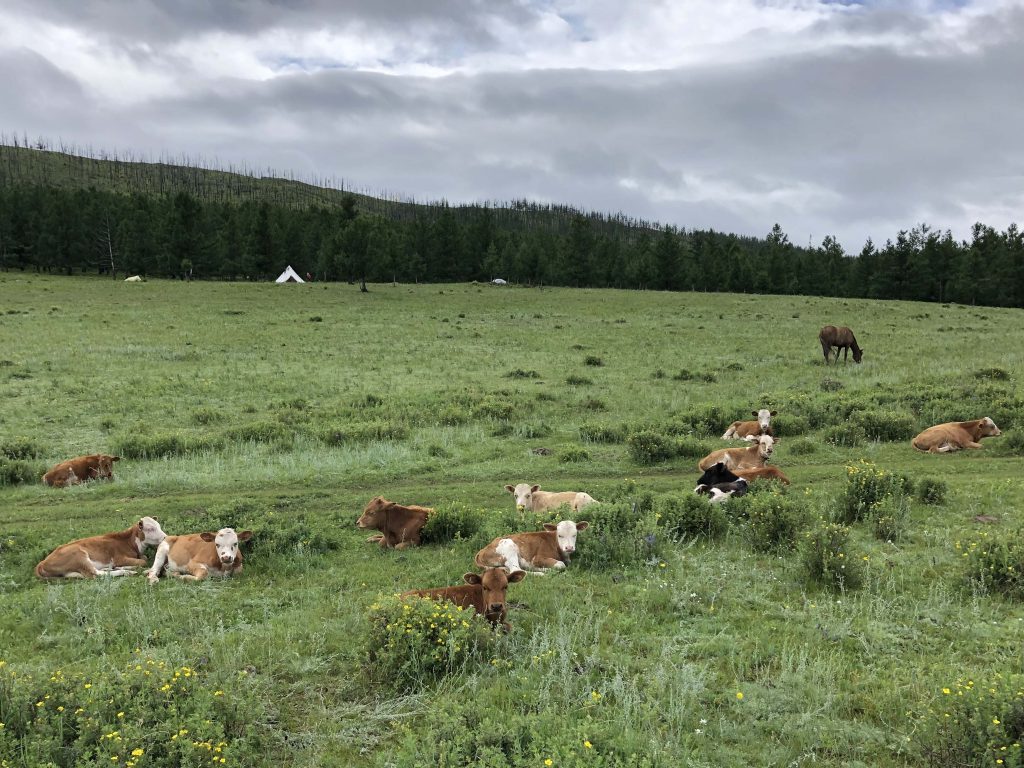
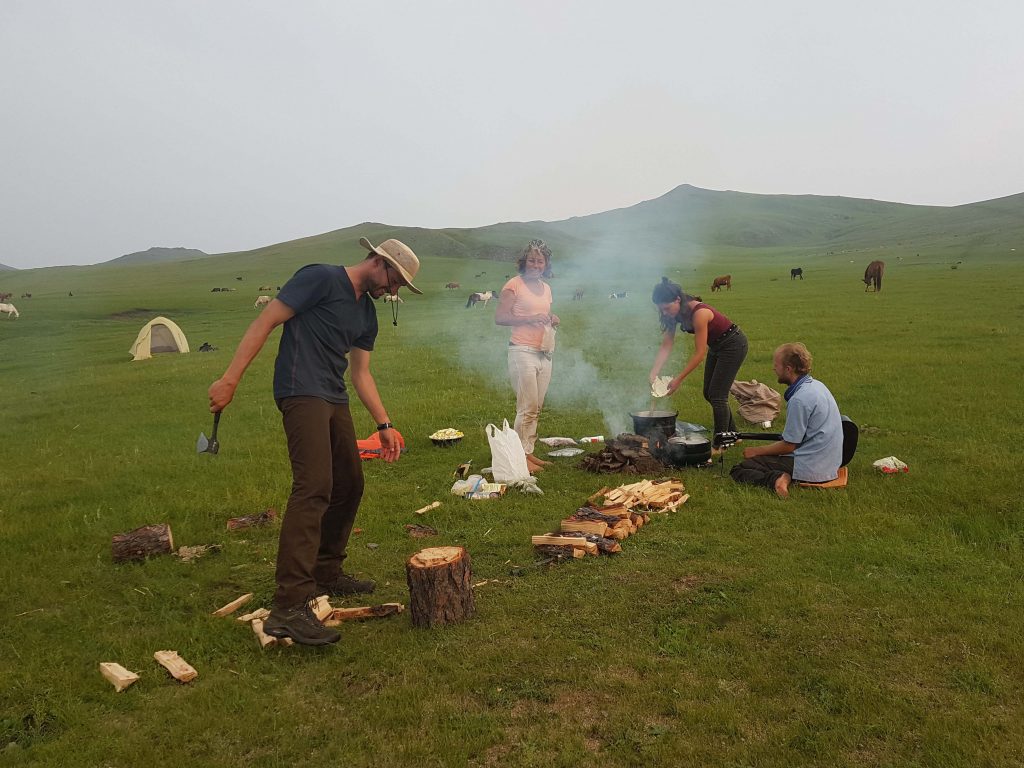
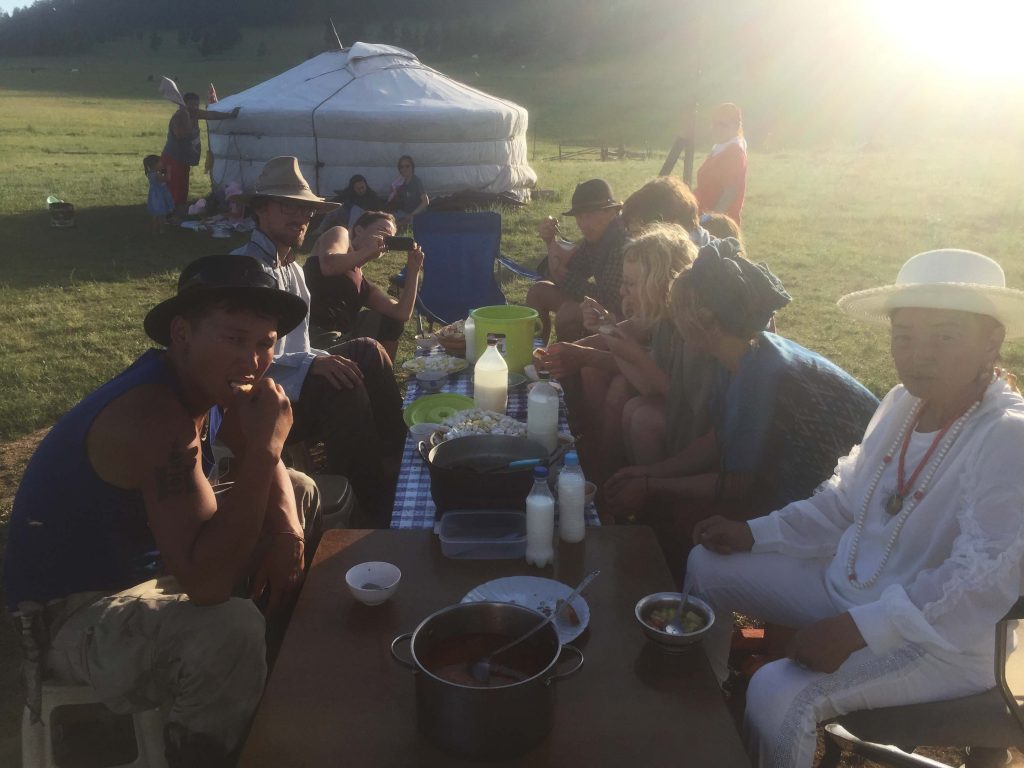
What did you learn about yourself during the travel?
I experienced my connectiveness with nature in a new way and that there is strength in myself, which I do not often need to mobilize in our comfort culture. The whole journey included trust in the success of the unknown. To meet up with a group of people and be dependent on each other, to connect in this situation and set your boundaries again. Through this, I learned a lot about myself and others. About these things we also exchanged thoughts in the group. I really enjoyed that. But I also experienced an ambivalence in the contact with the animals – on the one hand, to enjoy the common experiences, and at the other hand, to withstand the oddity to just come into Mongolia and take this horse on our travel. This, the horses for sure did not have in mind for themselves.
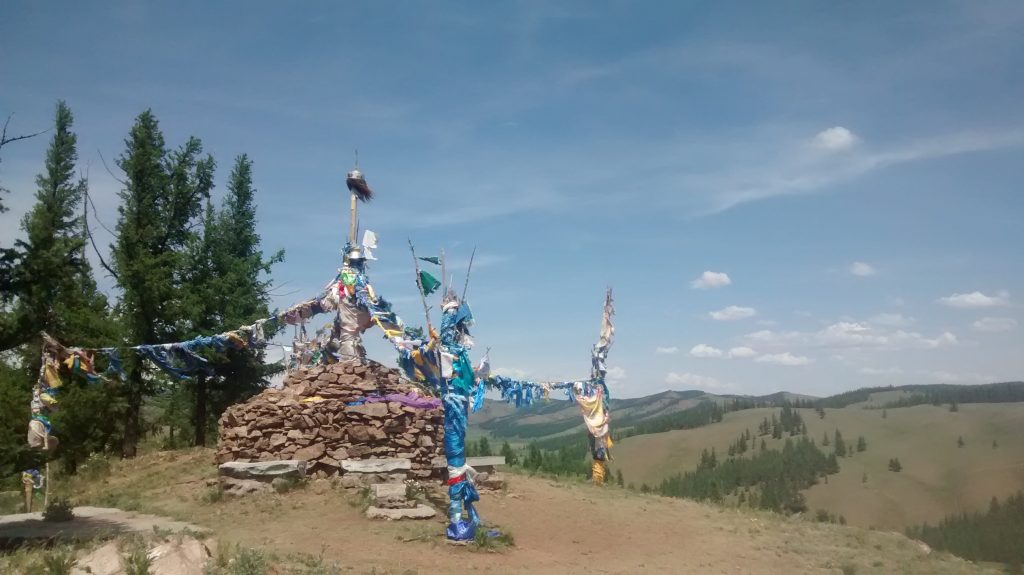
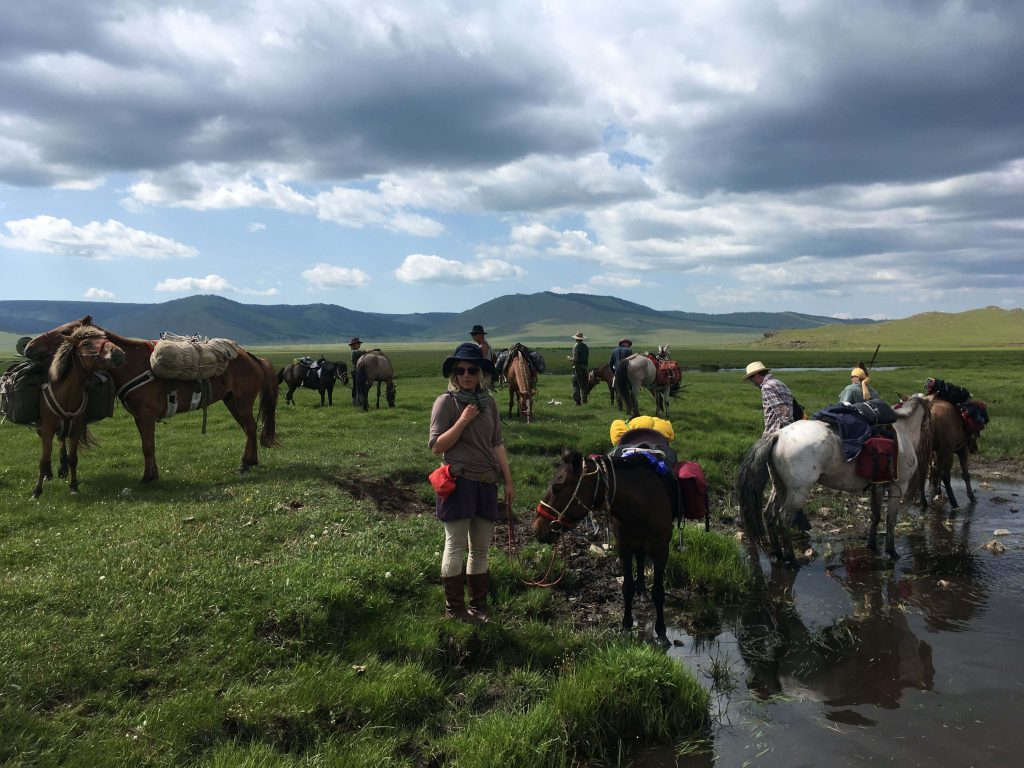
Do you see yourself as a Slow Traveler?
The part of the horse riding surely fits your definition of Slow Travel. Also, I find my motivation for this travel in Slow Travel, meaning the slow, conscious, mindful travel. However, I traveled to Mongolia and back home by plane. There is also the possibility to travel there by the Trans-Siberian Railway. This was not possible for me due to my job and its connected time limitation. The thought of traveling through all these regions by train and to see the nature slowly changing really speaks to me.
What do you think of Slow Travel as a way of travel?
What I really like about Slow Travel is the thought: “Which route can I cover within my own strengths?”. I do not really have a detailed understanding of how much power it really takes, if I let’s say travel from Berlin to Cologne by train. It is also not important what my personal condition is like on that day. I reach my destination anyway, if I am dreaming and listening to music or if I manage to work on something during the trip. When I walk, run, ride bike, paddle in a kayak I ride a horse, I am still confronted with my own condition. It makes a difference, if the ground is flat, the surface is sandy or fully asphalted. I think Slow Travel can help to find oneself. But I do not really understand Slow Travel as “jetting somewhere” and then practicing Slow Travel. For me, this would mean that I start from my own doorstep and go on the trip from there.
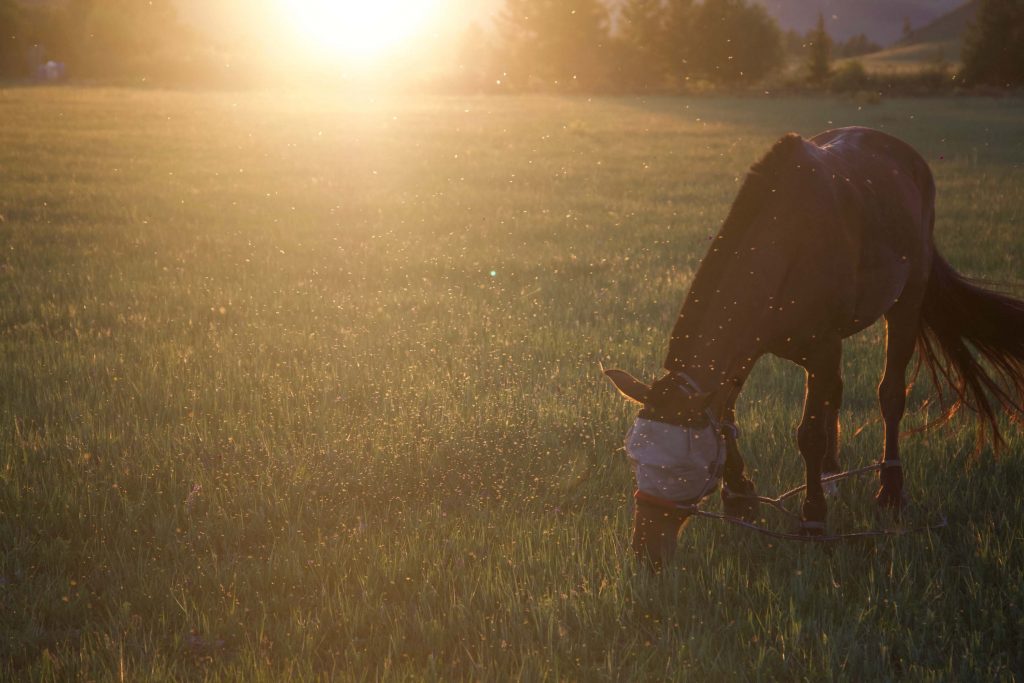
Contact
If you want to experience a travel on horseback in Mongolia, too, please feel free to contact organizer Frank Kelleter.
mongoliaonhorseback (a t) gmail.com
+49 176 835 523 00
You can also find him on Instagram and Facebook.
[1] [3] Daiber, Wolfram (2021): Sprichworte aus der Mongolei, In: http://sprichworte-der-welt.de/sprichworte_aus_asien/mongolische_sprichworte.html (15.03.2021).
[2] See Julke, Ralf (2015): 108 faszinierende Gedichte aus den Weiten der Mongolei, In: https://www.l-iz.de/bildung/buecher/2015/01/108-faszinierende-Gedichte-aus-den-Weiten-der-Mongolei-65671 (15.03.2021).
Note: All Mongolian sayings implemented in picture captions are also from the source [1].
Interview by Anika Neugart.
If you liked this article, you might also enjoy…
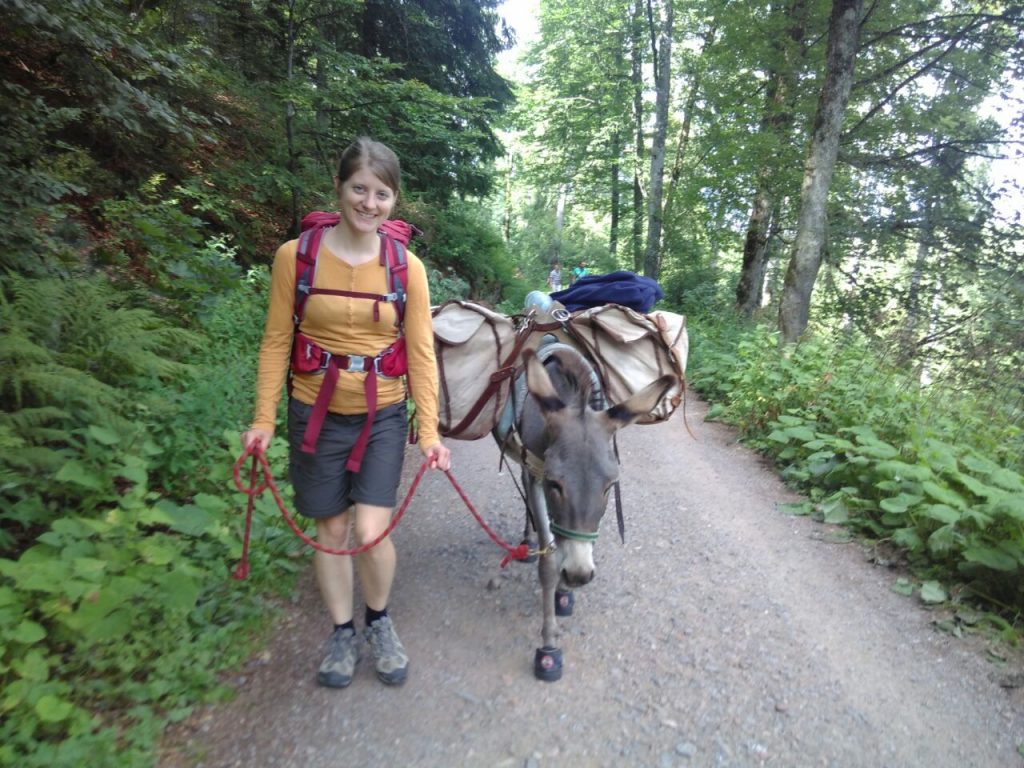
23 October 2020
Donkey hiking. Individual travel or guided day trip
In the year 2014, I met a very interesting human being at a music festival – a merchant from Hanover who sold sheepskins. At the night-time campfire he told me about his three-month travel with a donkey in the Spanish Pyrenees.